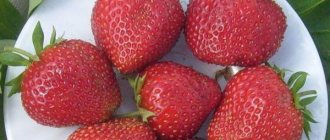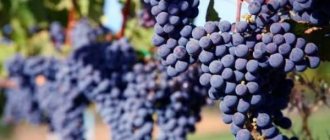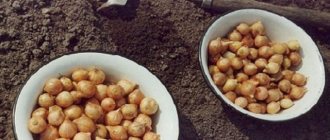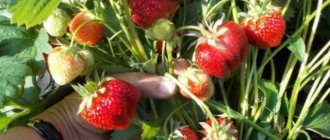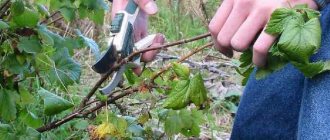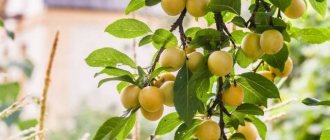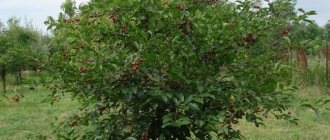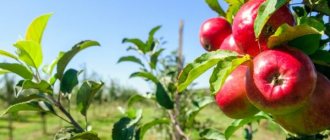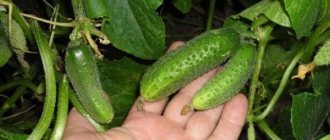The Dukat strawberry variety has become widely known due to its ripening period, taste and external characteristics. This variety is characterized by good adaptability to unfavorable conditions for other types of berries. Strawberries are able to germinate on almost all types of soil, without requiring special treatment. And a photo of the Dukat variety proves its marketable and appetizing appearance, which is valuable for small and medium-sized businesses in the field of agriculture.
Breeding history
The Dukat strawberry variety was bred in the last quarter of the last century by Polish breeders from the Institute of Horticulture and Floriculture, located in the Polish city of Skierniewice. They tried to develop a variety that would be highly resistant to frost and weather changes, could grow on any soil, and would bear good fruit.
Strawberries Coral 100 and Gorella were taken as parent varieties
. The Dukat strawberry was never included in the Russian State Register, but gardeners from many Russian regions plant it on their plots.
Photo of strawberry Dukat
This variety has been tested in most regions of Russia and Belarus. And as a result, it was included in the Belarusian register in 2006; it is recommended for cultivation in garden plots in a number of Belarusian regions.
Due to its undemanding quality of soil, resistance to seasons of drought and cold, immunity to pathogenic microorganisms and “harmful” bugs, this berry crop is planted with equal success on personal farmsteads and on an industrial scale.
Tips for spring and autumn planting
As mentioned above, the Dukat strawberry variety ripens in the summer. And planting can be done both in spring and autumn, if you follow the general useful recommendations of gardeners.
Autumn planting
In this option, the most acceptable planting time is the end of August. The deadline for planting is mid-September, because the sooner the variety has time to ripen before the onset of cold weather, the better.
During the summer season, ground soils are depleted. Therefore, it is worth starting planting in the fall by fertilizing the selected area in a ratio of 1 to 1. Gardeners use various fertilizers as fertilizer, ranging from humus to a manure mixture.
You need to dig the bed to a maximum depth of 30 cm. The peculiarities of the root system of the Dukat variety allow it to spread over the entire upper surface of the soil. Therefore, this depth will be quite sufficient. It is important to prepare the bed at least 3 weeks before planting begins.
Spring planting
In the case of spring planting, work should begin no later than April. Work is usually completed by mid-May. However, it is worth taking into account the climatic characteristics of the region where the plant is planted.
It is worth treating the garden bed with organic additions in the fall. In the spring, the main work will be weeding from weeds and loosening the soil. It is also important to moisten the soil for more comfortable planting. The Dukat variety is known to grow better in moist soil.
Advice! If soil moisture exceeds adequate limits, for example, due to heavy rains, you can dig holes for drainage purposes. All excess moisture will flow into them, preventing the roots from rotting, which will protect the Dukat from the rotting process.
Main characteristics and description of Dukat strawberries
This berry crop is classified as mid-early
— the ripening period for berries of the Dukat variety is in the last days of June - the first ten days of July (depending on the growing region).
The bushes of this strawberry are compact and lush; they can reach a height of 50-55 cm; they are distinguished by good foliage. The leaves are large in size, dark emerald in color, slightly wrinkled, with slight pubescence, and have no shine.
The formation of whiskers in Dukat garden strawberries is abundant
, therefore, there are no problems with the propagation of the variety, but you have to regularly remove excess rosettes so that they do not “take away” the nutrients necessary for the ripening of berries and the growth of bushes. The antennae are green in color and thickened.
Each bush produces up to 10 strong, low peduncles that grow lower than the leaves
. On each of the peduncles, up to 9-10 male and female flowers can be formed, collected in inflorescences. The size of the flowers is less than average, the petals are round and white in color. The stamens are large. The stalks are thickened and small in size. The calyxes are small in size, without pubescence, the sepals are simple, reflexed, the separation of ripe fruits is dry.
Characteristics of the variety
Review of Dukat strawberries, description of the variety, photo, it’s worth starting with finding out the origin of the crop. The birthplace of strawberries is Poland. Breeders managed to develop a frost-resistant variety that produces a large harvest and does not require special care.
The berries ripen early. In cold regions, the fruits ripen later, which justifies that Dukat strawberries belong to the mid-early varieties. Harvesting usually occurs in June-July.
The strawberry bush bears a large number of berries. The yield especially increases with frequent watering. About 2 kg of strawberries are harvested from one bush. The shape of the Dukat strawberry resembles a cone with smooth walls and a blunt tip. The berries are very large. The weight of one fruit reaches 50 g.
Considering the description of Dukat strawberries, reviews, size, taste of the berries, it is worth noting the juiciness of the pulp. The fruits are dense, covered with glossy bright red skin. The flesh is pink-red with almost no visible white center. The skin is covered with an elastic film that protects the fruit from damage. The berries are easily separated from the stalk, which simplifies the harvesting process.
Strawberry bushes of the Dukat variety grow spreading, powerful, but low. There is rapid growth of whiskers, which simplifies the reproduction process. The leaves are large and bright green. The peduncle is thick. Dukat produces bisexual strawberry flowers. The location of the inflorescences is below the level of the leaves.
Attention! The Dukat variety is rarely affected by gray mold and other diseases that progress with high humidity and temperature changes. Thanks to good immunity, strawberries are successfully grown in the northern regions.
The Dukat strawberry variety tolerates any soil, but the crop grows better on light and medium-light soil. Strawberry bushes tolerate winter well. The root system can withstand frost in the soil down to –8°C. However, you shouldn't risk severe hypothermia. Winter cover of the beds is guaranteed to protect Dukat strawberry bushes from freezing.
Strawberry yield Dukat
Strawberries of this variety are distinguished by a friendly yield - all berries ripen in approximately 12-14 days. At the same time, it is necessary to pick ripe fruits at least every other day so that the remaining berries ripen faster.
When grown in garden plots, up to 0.5-0.65 kg of ripe produce is collected from each Dukat bush
, on an industrial scale, from 80 to 115 centners of ripe berries of this variety can be collected from each hectare.
Maximum fruiting occurs in the second or third season after planting the seedlings. Moreover, the number of fruits with excellent presentation usually amounts to 75% of the total harvest, which is a good indicator.
STRAWBERRY!
Strawberry Asia
Features of the plant and fruiting
The bushes are compact, medium-sized, lush, well-leafed. The leaves are large, dark green, dull, pubescent, convex, slightly wrinkled. The whisker-forming activity is high, the whiskers are green and thick. Peduncles (up to 10 per bush) are located below the level of leaves. The inflorescences are spreading, consisting of 8-10 white, untwisted, bisexual flowers of medium size. The stamens are large, rich in pollen, which ensures high fruit set and evenness. The stalks are thick and short. The calyxes are small, pubescent with simple sepals bent upward, and are easily separated from the berries.
The variety is characterized by uniform ripening of berries and a short fruiting period
In terms of ripening time, the variety is classified as mid-ripening, although in different sources it is called both mid-early and mid-late, several days ahead of “Zenga Zengana”. In the conditions of Belarus, the beginning of fruiting usually occurs in the second or third ten days of June. “Dukat” is distinguished by its short duration (about 2 weeks), but intense and friendly yield, requiring regular berry picking, almost every other day. The productivity of the variety is assessed as high: from 77.5 to 120 c/ha or 400-650 g per bush, but inferior to the standards. Maximum yields are observed in the 2-3rd year of plant growth. The yield of class I berries (1 commercial grade) is 75.2-81.5% of the total harvest.
Consumer qualities of berries
The berries are large in size (the first ones up to 30-40 g, in the main harvest - 8-15 g), have a regular, wide, blunt-conical or spherical (kidney-shaped) shape with a weakly defined neck or without it. When they reach ripeness, they become dark red (evenly colored) and shiny. The seeds are few in number, golden-yellow, moderately pressed into the pulp.
The main purpose of the berries is dessert, tasting scores 4.0-4.9 points (out of 5), sugar-acid ratio - 7.0
The pulp is dark red, quite dense, juicy, with a dessert sweet-sour taste and a weak aroma. According to reviews, Dukat strawberries are excellent for fresh consumption and processing, tolerate transportation well, and can be stored for several days without refrigeration without losing their marketable and consumer qualities. Professional tasting scores vary: from 4.0 to 4.9 points (out of 5). Laboratory studies of the biochemical composition of berries, carried out at the Samara State University, showed a high content of soluble solids (14.5-15.5%), including:
| Nutrients and beneficial substances | Quantity |
| Sahara | 10,5% |
| Acids | 1,5% |
| Vitamin C | 30-36 mg% |
Advantages and disadvantages
The main advantages of the Dukat variety include:
- fairly early fruit ripening;
- uniform ripening of the crop;
- good taste and excellent presentation of the fruit;
- resistance to a number of diseases characteristic of other strawberry varieties;
- resistance to frost and periods of drought;
- fairly high yield of the variety.
There are practically no disadvantages noted in Dukat strawberries, you just need to know that Dukat strawberries have low resistance to powdery mildew. And due to the large formation of mustaches, they have to be removed regularly.
Harvest and storage
To preserve Dukat fruits longer, they are harvested 2 days before ripeness. The collection is carried out in dry, windless weather. When separating strawberries from the bush, you need to ensure that the berry remains with a tail. The harvest is collected in wicker baskets or wooden boxes, the bottom of which must be lined with paper. Place the berries in 1–2 layers.
The shelf life of ripe berries at temperatures from +20°C and above is 24 hours. When placing strawberries in the refrigerator, the shelf life of the fruit increases to 4 days, provided the temperature is maintained at +2°C
Strawberries are a tasty and healthy berry that grows in almost every garden.
Gardeners who want to have such a plant in their garden should pay attention to the Dukat variety, which is characterized by frost resistance and high yield.
Diseases and pests
The garden strawberry variety Dukat has high resistance to the following diseases:
- various leaf spots;
- verticillium wilt;
- gray fruit rot.
Photo of powdery mildew on strawberries
However, Dukat strawberries have low resistance to powdery mildew, so preventive treatments of the bushes should be carried out to prevent the occurrence of this disease.
Growing
Strawberry seedlings must have a fully developed pair of leaves, a root diameter of at least 4 mm with a large number of small roots. When marking rows for growing strawberries, it should be remembered that 'Dukat' is a widely growing variety, so the minimum planting interval is 60-80x30-40 cm. Strawberries can be replanted throughout the growing season. The summer period (July and August) is more favorable for replanting than the autumn period, because even such a resistant variety as 'Dukat' may not survive frost if the plant does not have time to create strong roots. The abundance of the harvest depends on the correct planting technology. The roots of the strawberry should not lie at the bottom of the hole, and the horn (rhizome) should be placed flush with the soil surface and pressed firmly with the earth so that the plant, if pulled strongly by the leaf, is not removed from the soil.
How to choose the right growing area
When choosing a site for planting rosettes of the Dukat variety, you need to pay attention to the composition of the soil. Although the originators of the variety claim that this strawberry can grow and bear fruit well on any type of soil and tolerates periods of drought well, it is better not to experiment - for all its unpretentiousness, this berry crop does not grow very well in elevated areas. In such conditions, moisture quickly evaporates in hot weather, as a result, strawberries suffer from a lack of moisture and their fruiting decreases.
Photos of strawberry seedlings
Dukat strawberries will bear fruit poorly on sandy and clay soils.
The taste of the berries will deteriorate if this variety is planted on saline, calcareous or too acidic soils. Also, you should not grow Dukat strawberries in completely open areas that are blown by cold winds.
Need to know!
This variety of strawberry grows well in damp areas, but river sand must be added to the planting holes to make the soil looser - in this case, rot can be avoided on the strawberry roots.
Reproduction
Dukat strawberries grow in one place for 4 to 5 years, then the plantings need to be updated. It is better to rejuvenate the plantation gradually by planting new bushes obtained from the mustache. A reliable conveyor of berries is created when young plants are planted in place of old plants.
The mustache is left on the mother bushes and rooted. In phase 3, the leaves are transplanted to a permanent place or grown a little more in “schools” with nutritious soil. In the first year of growth, it is better to remove flower stalks so that the plant gains strength and the root system and ground part are formed.
Ducat is compared with such well-known varieties as Lord or Zenga-Zengana. But unlike them, Dukat is unpretentious and frost-resistant. It is not afraid of continental climates with sudden temperature changes. And these are the most important qualities of strawberries that gardeners in the middle zone and northern regions can only dream of.
Dukat strawberry planting dates
This variety can be planted in spring or autumn - at any time, the bushes of this berry crop quickly acclimatize in a new place.
In the autumn period, it is necessary to carry out planting work from mid-August to the second ten days of September
. In this case, the Dukat strawberry seedlings will have time to take root in a new place and become sufficiently strong before the onset of frost.
Photo of planting strawberries Dukat
Strawberries with large fruits Mitze Schindler
The strawberry variety Mitze Schindler is a medium-late variety in terms of ripening. Breeders in Germany were involved in its breeding in the last century. The peculiarity of the variety is its unique taste and nutmeg aroma.
Mitze Schindler's garden strawberries allow you to grow low-growing bushes with a small number of leaves. They all grow with a downward slope. They are small in size and have a smooth outer surface. Presented in dark green. The inner surface of the leaf is ribbed.
In the photo - Mitze Schindler's kdubnik:
Strawberry Mitse
The weight of one berry reaches 10-20 g. But this figure is achieved only during the first harvest. On average, the weight will be 5 g. The shape of the fruit is round and has a dark cherry color. The fruits have a glossy surface and a bright red color.
The pulp has a delicate taste and density. It's also incredibly smooth. From 1 m2 you can get 0.8 kg of fresh berries. The quality of the harvest can be considered one of the best among dessert varieties.
The Mitze Schindler variety is characterized by rapid acclimatization to the soil and growing conditions. It exhibits increased resistance to drought and frost, and also has strong immunity to disease.
The video shows the sweetest strawberries:
Flowering is unisexual. For successful pollination, it is necessary to plant pollinating varieties near the bushes of Mitze Schindler, for which the best option for late fruiting would be to use the Korona variety. The variety is classified as remontant, as it bears fruit from June until autumn.
How and when to plant
Before planting a plant, it is necessary to carefully inspect the planting material. The bushes must be completely healthy. They should not contain dried roots or leaves affected by diseases. Before planting, it is worth treating the bushes with a solution of Fitosporin.
Garden strawberries of this variety bear fruit well and grow only in a well-lit area. At the same time, make sure that the soil is not too wet.
It should be fertile, breathable and light. Planting work must be done in autumn or spring. It is preferable to do this in the fall, since over the winter the bushes will be able to get stronger and grow a little. When planting, you need to adhere to the standard scheme of 50x20 or 60x15 cm. With this scheme of planting, you can get the maximum yield from every 1 m2.
The video shows planting strawberry seedlings:
It is worth planting bushes in the evening or when the weather is cloudy outside. The depth of the hole must fully correspond to the size of the roots. When planting, it is worth adding humus combined with wood ash to the hole. After planting, water the bushes generously, using warm water and an added stimulant for better rooting and growth. You also need to take care of laying mulch around the bushes. Straw or sawdust is best for this.
But this information will help you understand what Malvina strawberries look like in the photo.
This video will help you understand what the remontant Tsaritsa strawberry looks like and how big its fruits are.
It is also worth learning more about the process of caring for Elsanta strawberries: https://gidfermer.com/sadovodstvo/yagody/klubnika-elsanta-opisanie-sorta.html
How to care
The German variety Mitze Schindler does not require special attention in terms of care. But to get maximum yield, you should adhere to the following simple recommendations:
Preparing beds for planting garden strawberries
A couple of weeks before planting Dukat strawberries, you should well fertilize the area where this berry crop will grow. Any organic fertilizer is suitable as a top dressing; at least 1 kg of humus or compost is added to each square of surface. The fertilized area is dug up and loosened so that the soil is loose.
If the Dukat strawberry is planned to be replanted in the spring, then the place for it is prepared in the fall
. Organic matter is added to the soil and incorporated into the soil during autumn digging. Strawberry seedlings should be planted in the spring from the end of April to the second ten days of May.
Advice!
If there was heavy rain before planting and the soil is too wet, then grooves should be dug along the edges of the beds to reduce soil moisture.
a brief description of
Advantages of the variety
- early ripening:
- juicy and large fruits;
- dessert taste of berries;
- winter hardiness;
- resistance to a number of diseases;
- friendly fruiting;
- the fruits do not become smaller during the entire fruiting period;
- easily reproduces due to the large number of whiskers.
Among the disadvantages, it is worth noting the huge number of mustaches, which quickly thicken the plantings. This characteristic was also considered an advantage; it all depends on the gardener’s goals - to dilute faster or process less often. Despite their high winter hardiness, the bushes need shelter during winters with little snow.
Note: Dukat strawberries were obtained in 1980 and belong to the varieties of Polish selection. Her parents are Coral 100 and Gorella. The variety is still not included in the State Register of the Russian Federation, but it is approved for cultivation on the territory of Belarus, and has also been tested in Russian open spaces.
Strawberry Dukat is undemanding to soil, but still excessively clayey or sandy soil will not suit it, as well as saline and calcareous soils. For strawberries, select a flat, sunny area, protected from strong winds.
Dukat can be planted at any time of the year. Autumn planting is recommended for better survival of seedlings, but other seasons are also suitable. Prepare the soil in advance: remove weeds, dig up the soil, add humus.
Follow the planting pattern of 20 cm between plants and 70 cm between rows. Such a large row spacing is intended for a large number of whiskers, which will be easier to remove or dig in for further propagation.
Step-by-step landing instructions:
- dig holes to a depth of 15 cm;
- the root system of seedlings is straightened in the ground;
- fall asleep up to the root collar;
- compact the soil layer and water it;
- mulch with straw or sawdust in a layer of 5-8 cm.
If you bury the growing point, the strawberry bush will not grow well. When planted high, the roots become exposed during watering or freeze in winter.
Note: If the soil is too wet, add a handful of sand to each hole to reduce the risk of developing root rot.
Landing rules
This variety should be planted in rows, the distance between neighboring bushes should be at least 0.25-0.3 m, and the row spacing should be about 0.65 m. With this planting pattern, it is easier to fight weeds in the beds, as well as remove excess tendrils .
The holes for planting Dukat garden strawberries should not be too deep or too shallow, the main thing is that the roots are covered with a layer of soil at least 10-12 cm thick.
After planting, all plants are watered abundantly and covered with a layer of mulch - peat, rotted sawdust or pine needles.
Timing for planting strawberries in open ground - video
The process of planting seedlings
Planting strawberries of the Dukat variety in the garden is usually done in rows. If there is free space, it is optimal to organize row spacing with a width of 70 cm. As the Dukat strawberry grows, it will grow mustaches. At such row spacings it is easier to separate them and also to weed the weeds. If there are several beds, then maintain a distance of about 20 cm between them.
After dividing the rows, a hole is dug for each strawberry seedling. Backfilling is done with loose soil to the level of the apical bud. It is important to ensure that there are no exposed roots.
Its development depends on the correct depth of immersion of a strawberry seedling. If the plant is planted too shallowly, the root system will quickly dry out under the scorching rays of the sun. Strong deepening threatens the death of the seedling, especially in a damp area. The root system of Dukat strawberries will begin to intensively absorb moisture and rot.
After planting all the strawberry seedlings and watering, the soil in the garden bed is covered with mulch made from peat, sawdust or pine needles.
Further care for Dukat strawberries
The main thing when caring for this variety of strawberries is to adhere to the watering regime.
. In the spring and during the flowering period, watering strawberry bushes is carried out strictly at the root, making sure that drops of moisture do not fall on the foliage and buds. At this time, water should be added to the strawberry bushes 2-3 times a week. In summer, the irrigation regime remains the same as in spring. During the rainy season, the amount of watering should be reduced.
In autumn, this variety of strawberries needs to be watered once every 6-8 days.
During summer and autumn, you can water strawberries using the sprinkling method.
After each watering or rain, it is necessary to loosen the soil, simultaneously removing all weeds.
Growing and care
Dukat is an unpretentious strawberry variety, but basic agrotechnical measures are necessary. Without them, the berries become smaller, the plants become sick, and there is no harvest to be had.
Watering
Strawberry Dukat is very favorable to watering. They need to be carried out once a week, and in dry weather - every 2-3 days. Drip irrigation is convenient, which allows you to thoroughly wet the top layer of soil without burning the foliage.
In the morning or evening hours, sprinkling of bushes is used. If the plantation is small, then it is better to use warm, settled water. With a lack of water, a decrease in size and “withering” of the berries is observed, and an excess leads to a deterioration in taste and the possible development of black rot.
Advice: During the flowering period, sprinkling is highly undesirable. Reception has a bad effect on the development of ovaries, so watering is carried out only at the root.
Loosening, weed control
Weeds are removed as they grow and the soil is immediately loosened. Loosening is especially important on heavy soils so that the root system receives enough air and moisture. If there is no mulch, then you will have to grind the soil crust much more often. The best time for loosening is after watering, when the ground is slightly damp.
Removing a mustache
Whiskers are removed as they grow as early as possible. This is especially important at the beginning of flowering and fruiting, as well as in the autumn before wintering. The mustache is carefully cut with pruners or scissors. When pulled out of the soil, the root system and above-ground part of the bush may be damaged.
If there is a need to increase the plantation, then leave 2-3 mother plants, intended only for producing tendrils, from which small bushes will gradually form.
Top dressing
With proper nutrition, especially on poor soils, strawberry yields will be high. Feeding is carried out according to the following scheme:
- In the spring, add ammonium nitrate or mullein infusion (1:10). They will provide plants with the nitrogen necessary for active growth and preparation for flowering.
- In summer, complex mixtures of organic or inorganic nature are used. During the period of ovary formation and fruiting, strawberries especially need nutrients. Humus or compost is added under the bushes, which will also serve as mulch.
- In the fall, a potassium-phosphorus mixture is added to strengthen the plants before the long winter.
Tip: Do not overfeed Ducat strawberries with nitrogen. This element is necessary only in the spring for the active growth of green mass. In other seasons, the active growth of the bush will only draw nutrients to itself to the detriment of fruiting.
Pest and disease control
With the correct cultivation technology, Dukat practically does not get sick. But sometimes strawberries are damaged:
- Black rot that develops on fruits. The berries become sour and tasteless. When ripe, they darken and a fluffy black coating appears on the surface. In case of severe infection, the bushes are destroyed, and the remaining plantation is treated with copper oxychloride.
- Powdery mildew, which forms a white coating on the leaves. Next, dark spots appear on the leaves and fruits. Fungal disease spreads quickly in damp, cloudy weather. Treatment with a solution of soda (50 g of soda per 10 liters of water), potassium permanganate or colloidal sulfur helps.
- A nematode, the appearance of which is noticeable by the deformed leaf blade. Then the leaves become dark and spots appear on the surface. A “shower” of warm (+45C) water, which is carried out twice, helps against the pest.
Preparing for winter
Dukat does not suffer from winter frosts and therefore feels great in the middle zone and northern latitudes. But to be on the safe side, it is advisable to mulch the soil around the bushes and cover them with leaves and agrofibre. The root system can withstand soil freezing down to -8C, but during frosty winters with little snow, lower temperatures are possible.
Strawberry Dukat: reviews from gardeners who grow the variety
Grigory, 45 years old, Ulyanovsk region: I grow strawberries on my plot for sale, I have been doing this for 5 years. In the last couple of seasons, Dukat has focused on strawberries. This variety bears fruit consistently in any weather, its yield is equally stable in hot weather and in the rainy season, and the fruits are quite large and tasty.
Natalya, 50 years old, Volgograd region: I grow several varieties of strawberries on my plot, but the Dukat variety remains my favorite. With timely watering and fertilizing, the yield remains consistently high. The variety needs to be fed three times a season, then fruiting does not decrease. The berries are tasty and quite aromatic, well suited for making jam. I recommend this variety to everyone.
Olga, 50 years old, Saratov region: I have been cultivating Dukat strawberries for the fifth season. I would like to note that this variety bears maximum fruit in the first three seasons, then the yield began to decline. As a result, this spring I started transplanting Dukat to a new place. This year I will remove the flower stalks from the transplanted bushes so that the bushes take root and become stronger, then next year my strawberry plantation will produce a big harvest.
Dukat strawberries do not require special care, and if you follow the irrigation regime and timely application of fertilizing, its yield only increases.
This variety can be grown not only in small farms, but also on an industrial scale.
Strawberry varieties by ripening period
According to the ripening period, strawberry varieties are divided into early, middle and late. Separately, agronomists distinguish remontant crops, which bear fruit repeatedly in one growing season.
Ultra early varieties of strawberries
Early and ultra-early varieties ripen in early summer.
This type of ripening is represented by many types, of which the following can be distinguished:
- Kokinskaya dawn. The fruits are light in weight, up to 15 g. The berries are purple in color. The pulp is poured, medium density, dessert taste with a distinct sour aftertaste. Gardeners remove 0.9–1 kg of fruit from 1 m² of plantings.
Clery. The development of scientists from Italy refers to super-early hybrids. It is advisable to grow the crop in a greenhouse. The fruits ripen with an average weight of 25–40 g. The pulp is elastic, the taste is honey-strawberry, there is no acid. 0.5–1 kg of crop is harvested from the bush.
Olvia. A product of Ukrainian selection, popular in the middle zone of the CIS countries. The variety is large-fruited, the weight of one specimen reaches 40 g. The yield is high. Average fruiting rates are 1 kg per bush. During professional breeding, farmers remove 2 kg of berries from the plant. The skin of the fruit is pronounced red, the flesh is plump and sweet.
Medium ripening strawberry varieties
Mid-season strawberries ripen from the third decade of June to the beginning of July.
Medium-season varieties include the following:
- Lord. It is characterized by a fruit size of up to 45–55 g. The color of the berries is red, the shape is rounded and cone-shaped. The yield by the fourth year of fruiting reaches 1–1.5 kg per bush. The taste is dessert with a spicy strawberry aroma.
Anna. The variety is zoned in the West Siberian region. The weight of the berries is 10–20 g. Externally, the berries are elongated and cone-shaped. The skin is red with an orange tint. The pulp is white, elastic, with a pleasant sweetish aftertaste.
Vima Kimberly. The hybrid is recommended for cultivation in the Central region. The berries have the shape of a cone. One copy weighs 20–35 g. The color of the peel is red-orange. The sweetness of the pulp is moderate.
Late ripening strawberry varieties
Late varieties in temperate climates begin to ripen in mid-July.
The following varieties are popular among farmers:
- Polka. The hybrid was bred in the Netherlands. The weight of the berries is small, up to 20 g. The first fruiting is sometimes distinguished by larger berries weighing 30 g. The skin is red, the flesh is whitish, elastic. According to the taste characteristics, the fruits are dessert with a pronounced sourness and spicy aroma. Farmers harvest up to 300 g of crop from a bush.
Malling Pandora. British variety, bred in the 50s of the twentieth century. The berries have a flattened-round shape. One specimen weighs on average 30 g. The skin is burgundy. The pulp is light red, juicy. The taste is standard strawberry. Gardeners usually harvest up to 250 g of harvest from one plant.
Carmen. The variety was developed by scientists from the former Czechoslovakia. At the first fruiting, large fruits weighing up to 40 g ripen. Then the berries become smaller, 15–20 g. The peel and pulp are cherry in color. The strawberries are plump and dense. During the growing season, gardeners collect 200 g of berries from one bush.
Remontant strawberry
Strawberries of remontant varieties bear fruit several times during the growing season. The advantage of remontant strawberries is their high yield. With the same cultivation of plantings, the gardener receives at least 2 times more berries in one season.
Find out more about remontant strawberry varieties.
When choosing remontant strawberries, pay attention to the following varieties:
- Mara de Bois. The variety is distinguished by medium-sized fruits weighing up to 25 g. The berries are of a standard cone-shaped type. The skin is crimson with an orange tint and a glossy sheen. The pulp is white, juicy. The name is translated from French as “wild berry”. Indeed, according to tasters, the taste is similar to wild strawberries. In France, where the crop was developed, the harvest is harvested from May to October.
Albion. The American selection variety is famous for its high yield and resistance to diseases. With the right agricultural technology, farmers manage to collect up to 2 kg of fruit. The berries ripen large, weighing from 40 to 60 g. The strawberries are burgundy, shiny, conical in shape. The pulp is pink in color.
Queen Elizabeth II. The ripe crop has a cone-shaped appearance. The peel is red with a glossy sheen. The fruits are quite large - the average weight of one specimen is 40 g.
Temptation. The plant bears fruit with medium-sized berries up to 30 g. Their shape is round, the peel is light cherry with a glossy sheen. The pulp is juicy, with a pronounced nutmeg aroma. The taste is dessert, the acid is almost not felt.
The nuances of growing garden strawberries
Taking certain measures when growing strawberries will ultimately yield good results. To do this, you need to choose the right time and place of planting, and purchase good seedlings.
Time and place
The Dukat variety can be grown on any soil, but the crop should not be planted on waterlogged or dry soils. The planting location is chosen to be sunny, without access to cold winds or drafts. Strawberries are planted in spring and autumn.
Planting material
When purchasing planting material, you should pay attention to the following factors:
- healthy seedlings. It is bred from mother plants in special laboratories;
- trusted manufacturer;
- certified nursery;
- on the bush, in addition to last year’s leaves, there are 3 new ones;
- healthy leaf color;
- horns of light green color, more than 7 millimeters thick;
- the length of the roots of the open system is at least 7 centimeters;
- the roots of the closed root system are visible through the cup.
Landing Features
Before any planting, the land is prepared. The only difference is that in the spring the soil is not prepared in advance; in the fall the procedure begins 2-3 weeks in advance.
Autumn
The soil for autumn planting is prepared several weeks in advance. They dig up the soil using a shovel, remove the weed, and apply fertilizer. If humus or compost is used, then one kilogram of fertilizer should be applied to each square meter.
Spring
It is impossible to name the exact timing of planting in the spring. The main thing is to fulfill the requirement: wait for settled weather, when the threat of night frosts has passed.
The site is prepared for planting: debris is removed, dug up, and loosened. Dry soil is moistened, waterlogged soil is dried. To do this, they dig grooves where the water goes.
Planting scheme
There are several ways to plant berries. It is preferable to plant Ducat strawberries in rows. The distance between bushes is 70 centimeters, in rows - 30. This scheme makes it possible to freely care for each bush.
The root collar is not buried during planting - this will cause rotting of the crop. The roots sticking out from above are also not left - the strawberries will dry out. The planting depth is maintained at 15 centimeters. The root system is carefully filled, leaving no air gaps. Then carry out abundant watering and mulching.
